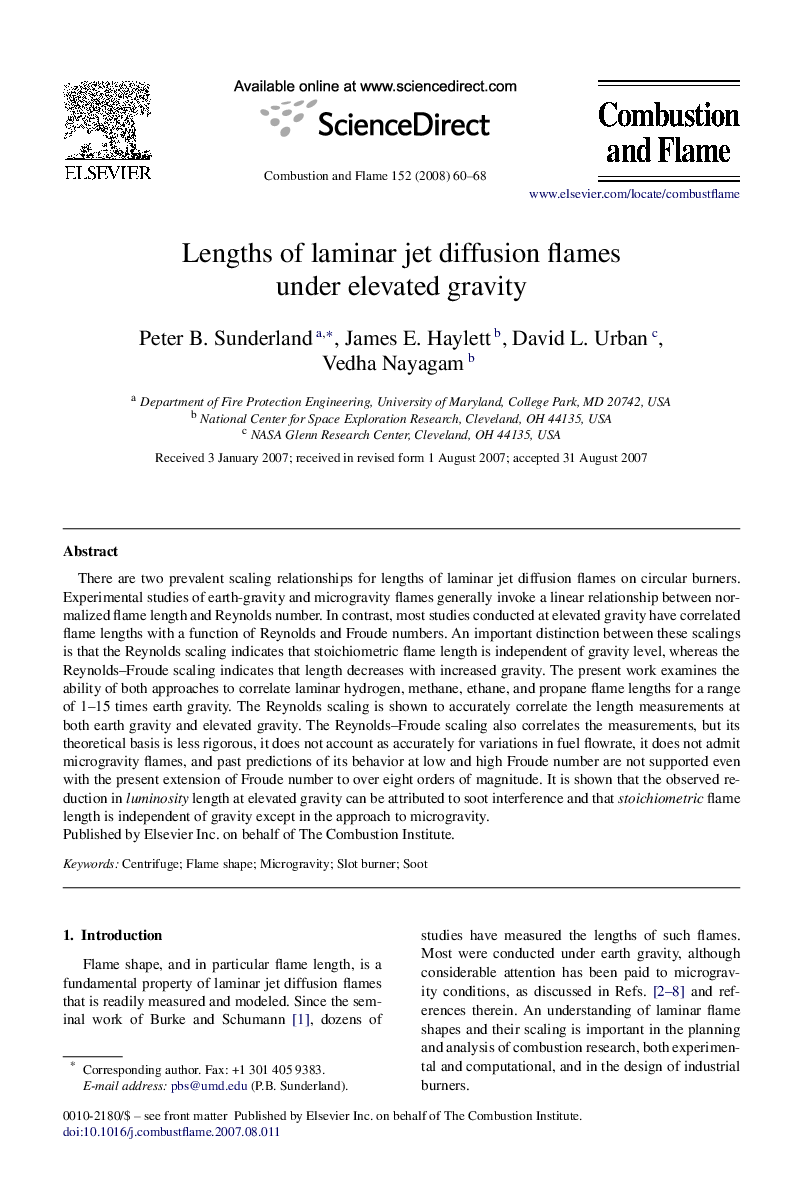| Article ID | Journal | Published Year | Pages | File Type |
|---|---|---|---|---|
| 167070 | Combustion and Flame | 2008 | 9 Pages |
There are two prevalent scaling relationships for lengths of laminar jet diffusion flames on circular burners. Experimental studies of earth-gravity and microgravity flames generally invoke a linear relationship between normalized flame length and Reynolds number. In contrast, most studies conducted at elevated gravity have correlated flame lengths with a function of Reynolds and Froude numbers. An important distinction between these scalings is that the Reynolds scaling indicates that stoichiometric flame length is independent of gravity level, whereas the Reynolds–Froude scaling indicates that length decreases with increased gravity. The present work examines the ability of both approaches to correlate laminar hydrogen, methane, ethane, and propane flame lengths for a range of 1–15 times earth gravity. The Reynolds scaling is shown to accurately correlate the length measurements at both earth gravity and elevated gravity. The Reynolds–Froude scaling also correlates the measurements, but its theoretical basis is less rigorous, it does not account as accurately for variations in fuel flowrate, it does not admit microgravity flames, and past predictions of its behavior at low and high Froude number are not supported even with the present extension of Froude number to over eight orders of magnitude. It is shown that the observed reduction in luminosity length at elevated gravity can be attributed to soot interference and that stoichiometric flame length is independent of gravity except in the approach to microgravity.
